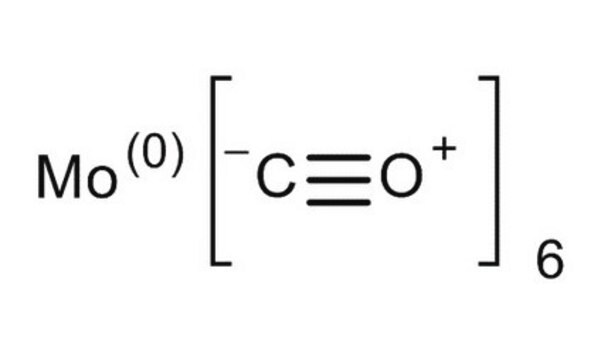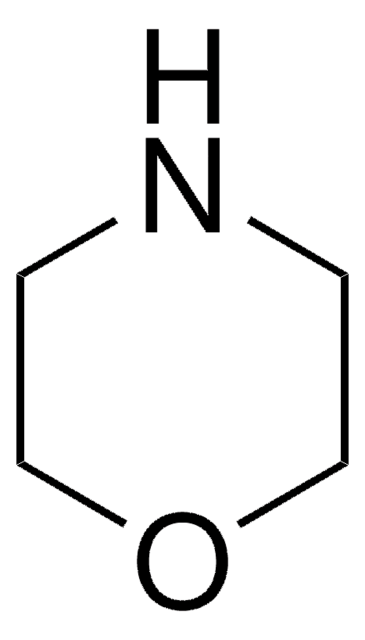577766
Molybdenumhexacarbonyl
≥99.9% trace metals basis
Synonym(s):
Hexacarbonylmolybdenum(0)
About This Item
Recommended Products
vapor density
9.1 (vs air)
Assay
≥99.9% trace metals basis
form
solid
solid
purified by
sublimation
reaction suitability
core: molybdenum
reagent type: catalyst
bp
156 °C (lit.)
mp
150 °C (dec.) (lit.)
density
1.96 g/mL at 25 °C (lit.)
SMILES string
[Mo].[C-]#[O+].[C-]#[O+].[C-]#[O+].[C-]#[O+].[C-]#[O+].[C-]#[O+]
InChI
1S/6CO.Mo/c6*1-2;
InChI key
KMKBZNSIJQWHJA-UHFFFAOYSA-N
Looking for similar products? Visit Product Comparison Guide
General description
Signal Word
Danger
Hazard Statements
Precautionary Statements
Hazard Classifications
Acute Tox. 3 Inhalation
Storage Class Code
6.1C - Combustible acute toxic Cat.3 / toxic compounds or compounds which causing chronic effects
WGK
WGK 3
Flash Point(F)
Not applicable
Flash Point(C)
Not applicable
Personal Protective Equipment
Choose from one of the most recent versions:
Already Own This Product?
Find documentation for the products that you have recently purchased in the Document Library.
Customers Also Viewed
Articles
Nanostructured Materials Through Ultrasonic Spray Pyrolysis
High Purity Metalorganic Precursors for CPV Device Fabrication
Spin-based electronic (spintronic) devices offer significant improvement to the limits of conventional charge-based memory and logic devices which suffer from high power usage, leakage current, performance saturation, and device complexity.
Nanostructured Materials Through Ultrasonic Spray Pyrolysis
Our team of scientists has experience in all areas of research including Life Science, Material Science, Chemical Synthesis, Chromatography, Analytical and many others.
Contact Technical Service









